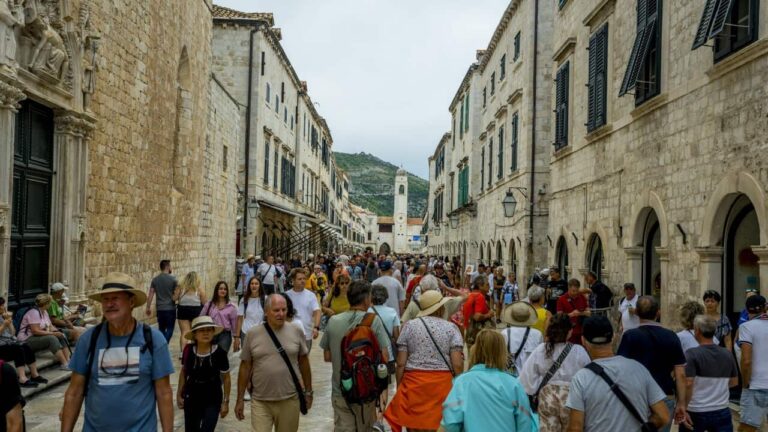European tourist attractions such as Amsterdam and Venice are struggling to cope with a surge in tourists. Milan is considering banning the sale of pizza and gelato after midnight and imposing closing times for outdoor areas of restaurants and bars. According to The Economist, set for summer 2023, 16.9 million tourists visited during the peak season, setting a record for Greek tourism, despite parts of the country being destroyed by wildfires.
We will introduce how some tourist spots are controlling crowds, including enacting new protection laws, collecting taxes, and completely blocking access.
venice

Citizens and activists faced off against police during a demonstration on Thursday against a new €5 admission fee for day-trippers in Venice.Source: AAP/Luca Bruno
Venice, one of the world’s top tourist destinations, saw 3.2 million visitors stay overnight in its historic center in 2022, far fewer than its resident population of just 50,000. On Thursday, it began collecting admission fees for day-trippers.
Day visitors must purchase an $8 ticket and will be monitored by inspectors at key points of the UNESCO World Heritage Site.
In 2021, the city banned large cruise ships from entering the lagoon due to concerns about their environmental impact on the city.
Venice has also introduced a tax on guests.
Amsterdam

Tourists in Amsterdam city center on Easter Sunday 2024. Source: AAP/Sipa USA
Amsterdam has long tried to shake off its reputation for rowdy stag parties, drugs and sex, which are partly responsible for the influx of around 20 million tourists a year. In 2023, Amsterdam launched an online campaign aimed at discouraging young British men from traveling. Go to Amsterdam to get high or drunk.
In typical Dutch frankness, the Dutch government told them to “stay away” or risk arrest.
Amsterdam also announced last week that it would ban new hotel construction and halve the number of river cruise ships in the city within five years.
Last year, it also decided to ban smoking marijuana on the streets of the entertainment district.
dubrovnik

Tourists visiting Dubrovnik, Croatia, March 30, 2024. Source: AAP/Grgo Jelavic/PIXSELL
Croatia’s medieval walled city of Dubrovnik is one of the most overcrowded cities in Europe, and the flow of tourists can sometimes make it impossible to walk through the historic Old Town. The jewel of the Adriatic has seen a huge spike in visitor numbers since its scenes in the game series. The town, with a population of 41,000, was photographed with its ramparts in 2011. In 2023, his 1.2 million tourist arrivals were below his 2019 record of 1.4 million. In 2019, local authorities limited cruise ship arrivals to two per day, with no more tourists coming. It can carry more than 4,000 passengers at a time.
It also launched an app that uses machine learning and weather forecasting to predict when the UNESCO World Heritage Site Old Town will be busiest.
Barcelona

In Plaza Sant Felip Neri, in the heart of Barcelona’s Gothic Quarter, several groups of domestic visitors and tourists can be seen taking part in cultural visits. Source: AAP/Sipa USA
Located on the Mediterranean coast, Barcelona is the capital of the Catalan region, home to famed Gaudi architecture and one of Spain’s top soccer clubs. Ada Colau is a left-wing former housing rights activist who served as the city’s mayor from 2015 to June. In 2023, it cracked down on illegal Airbnb rentals that were accused of pricing locals out of the real estate market.
The city also restricted tour groups from entering the historic Boqueria market, especially during peak shopping hours.
Groups organized throughout the center will also be limited to a maximum of 20 people, and guides will not be allowed to use loudspeakers.
According to the City Council, the number of tourists registered in hotels, housing and hostels in 2023 decreased by 6.9% compared to 2019 figures.

